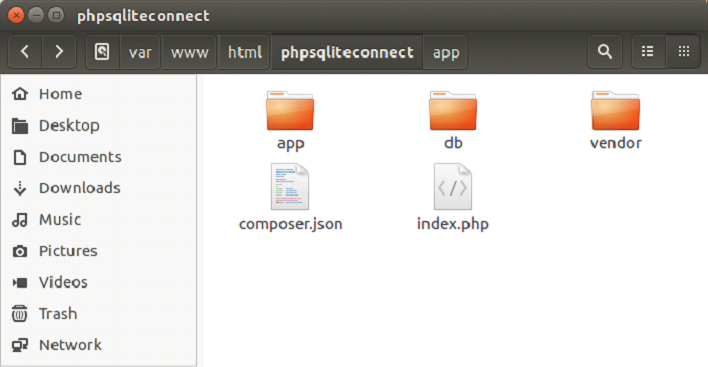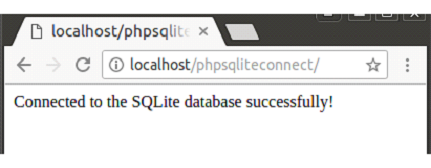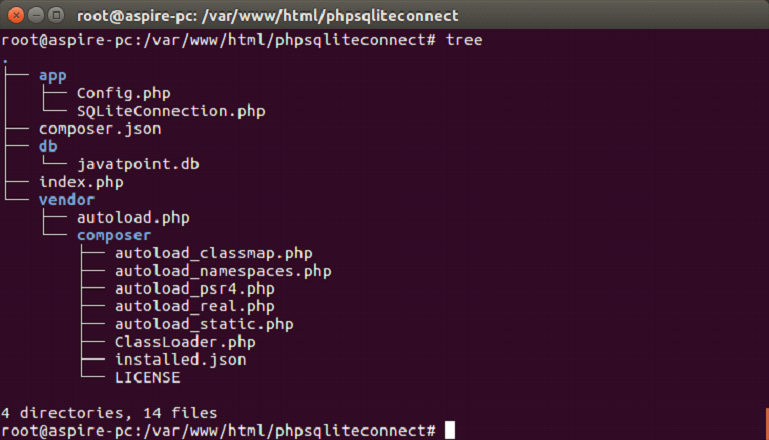For Connecting SQLite database with PHP, you must have PHP and SQLite installed on your system.
If sqlite is not installed, first install sqlite by using the following command:
sudo apt-get install sqlite3 libsqlite3-dev Install Sqlite-php connection driver
sudo apt install php-sqlite3 Follow the steps given below systematically:
- Create a folder “phpsqliteconnect” in www directory.
- Create two subfolders “app” and “db” inside “phpsqliteconnect”.
- Create a JSON file “composer.json” inside “phpsqliteconnect”, having the following code:
{
"autoload": {
"psr-4": {
"App\\": "app/"
}
}
} Open the Command prompt, go to the phpsqliteconnect and execute the following code:
composer update 
Now, you will get the following message:

Note: The composer will create a new folder named “vendor” automatically.
if composer is not installed then first install composer
apt install composer Now create a file name “index.php” in the root folder “phpsqliteconnect”, having the following code:
<?php
require 'vendor/autoload.php';
</textarea></div>
<hr/>
<h2 class="h2">Establish connection with SQLite database</h2>
<p>Create a new file "Config.php" inside the app folder, having the following code:</p>
<div class="codeblock"><textarea name="code" class="php">
<?php
namespace App;
class Config {
/**
* path to the sqlite file
*/
const PATH_TO_SQLITE_FILE = 'db/javatpoint.db';
} The constant PATH_TO_SQLITE_FILE is used to store the path to the sqlite database file inside the db folder.
Now, create a new SQLiteConnection.php file and add the SQLiteConnection class as follows:
<?php
namespace App;
/**
* SQLite connnection
*/
class SQLiteConnection {
/**
* PDO instance
* @var type
*/
private $pdo;
/**
* return in instance of the PDO object that connects to the SQLite database
* @return \PDO
*/
public function connect() {
if ($this->pdo == null) {
$this->pdo = new \PDO("sqlite:" . Config::PATH_TO_SQLITE_FILE);
}
return $this->pdo;
}
}After having all classes in places, you use the following command to generate the autoload file:
composer dump-autoload -o <?php
ini_set('display_errors', 1);
error_reporting(E_ALL ^ E_NOTICE);
require 'vendor/autoload.php';
use App\SQLiteConnection;
$pdo = (new SQLiteConnection())->connect();
if ($pdo != null)
echo 'Connected to the SQLite database successfully!';
else
echo 'Whoops, could not connect to the SQLite database!';
?> 
Now, open the localhost an your browser http://localhost/phpsqliteconnect/

Connection is established successfully. You can also see the tree sturcture by by using the tree command:

Leave a Reply